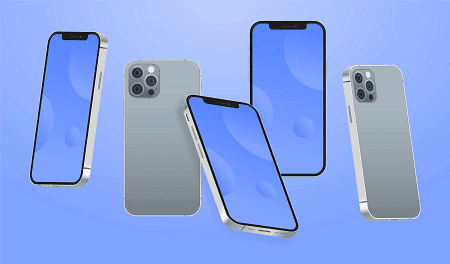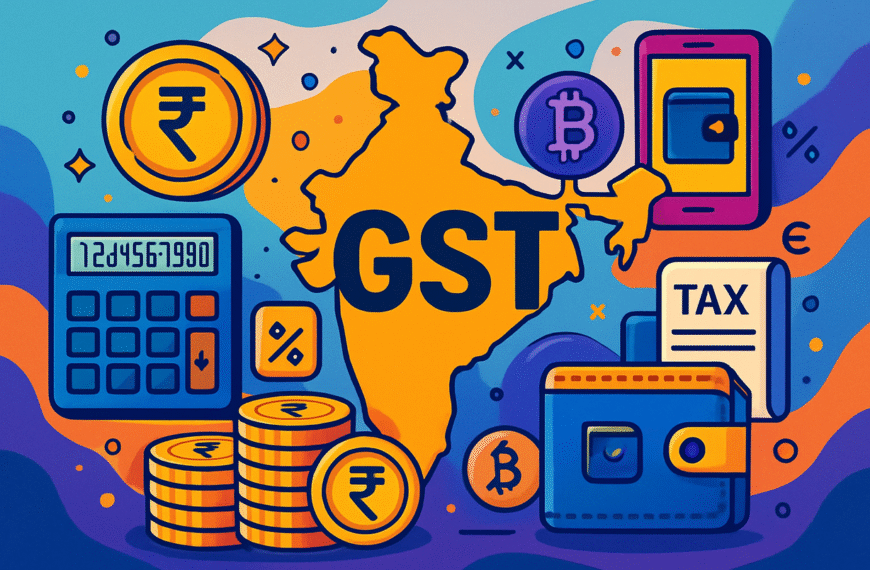📱 Part 1: Technology & Media Trends
1. AI and Intelligent Automation
Artificial Intelligence (AI) continues to permeate nearly every facet of technology and media:
- Generative AI tools (like GPT‑4, ChatGPT, DALL·E, etc.) are enabling creators to generate text, images, video, even 3D assets, with minimal effort. Media companies are integrating content‑creation bots for script‑writing, ad creative, and real‑time news updates.
- Personalized experiences are driving consumer engagement through recommender engines, voice assistants, and context‑aware UIs. Platforms like Netflix and Spotify are tailoring suggestions using real‑time behavior data and AI pattern recognition.
- Automated workflows in tech and enterprise applications boost efficiency. Robotic Process Automation (RPA) tools are helping with everything from logging invoices and screening resumes to responding to emails via conversational AI assistants.
Why it matters: AI supercharges creativity and scale—enabling smaller teams to do more. Redundant tasks shift to automation, freeing humans to focus on strategy and innovation, while personalization deepens user trust and brand connection.
2. Extended Reality (XR): AR, VR & Beyond
Extended Reality—which includes Augmented Reality (AR), Virtual Reality (VR), and MR (Mixed Reality)—is advancing rapidly:
- AR’s mainstream moment has arrived via mobile devices and AR glasses. Apps now overlay directions, translations, product previews, and interactive gaming onto everyday scenes.
- VR rebounding with new headsets like Meta Quest, Sony’s PS VR2, and HTC VIVE reveal growing interest in immersive entertainment, remote collaboration, and training simulations.
- Enterprise use cases in XR range from virtual meetings in 3D spaces (Facebook Horizon Workrooms, Spatial) to remote assistance and AR-guided manufacturing and maintenance.
Why it matters: XR offers a richer, more interactive layer to digital experiences. As hardware becomes lighter, cheaper, and wirelessly connected, immersive mediums become integrated into work, learning, gaming, and media.
3. The Short‑form Video Explosion
From social platforms to news organizations, short videos punch well above their weight:
- TikTok, Instagram Reels, YouTube Shorts dominate discovery and innovation in storytelling. They thrive on rapid, snackable content that can go viral within hours.
- Algorithm-paced production: Brands plan “trends-first” clips, optimizing thumbnails, captions, and hooks to ride discovery algorithms.
- Monetization models—like Creator Funds, ad partnerships, and affiliate programs—are maturing across platforms, turning passion into income.
Why it matters: Short-form video drives attention in an era of diminishing attention spans. Quick, visual-first content influences culture, informs buying decisions, and accelerates brand awareness.
4. Podcasting & Audio Renaissance
Audio thrives in a multi-screen world:
- Podcast growth continues—both in quantity and listener time. True crime, business, wellness, and niche interest podcasts flourish. Exclusive deals from Spotify and Apple signal high confidence in monetization.
- Audio as everyday companion: Commuters, exercisers, multitaskers—podcasts and smart speakers meet needs while screen attention shifts elsewhere.
- Audio innovation includes dynamic ads, interactive voice elements, and localized content.
Why it matters: Low production hurdle and low attention threshold make audio ideal for content experimentation. For brands, podcasts create trust and intimacy, while listeners discover niche voices and perspectives.
5. Privacy, Security & Regulatory Trends
Video by Quick Support, used under Creative Commons license.
As technology embeds deeper into our lives, regulation and consumer expectations rise:
- New data privacy regulations (like GDPR, CCPA+, GDPR‑like laws across Asia and Latin America) force companies to redesign user consent flows and data handling practices.
- Privacy-first advertising emerges in a cookieless world. Contextual ads, first-century data partnerships, and user-level targeting are replacing third-party trackers.
- Security threats escalate—deepfakes, supply chain hacks, and ransomware push companies toward Zero Trust models and tighter governance.
Why it matters: Trust—built through transparent, respectful data practices—is a strategic advantage. Media and tech brands that prioritize user privacy and proactive protection build loyalty and reduce risk.
6. Sustainability & Green Computing
The tech industry is answering climate urgency with green initiatives:
- Energy-efficient data centers powered by renewables are now essential. Go‑to techniques include liquid cooling, server right-sizing, and carbon‑aware task scheduling.
- E‑waste reduction strategies—from trade‑in programs to modular design and recycling partnerships—are gaining traction.
- Responsibly sourced components (like conflict‑free minerals and recycled metals) are customer differentiators as activism spreads.
Why it matters: Tech’s environmental footprint matters—to regulators, investors, and users. Sustainability becomes both ethical imperative and driver of brand growth in the green economy.
📱 Part 2: Mobile Launches in 2025
Here’s a look at the most anticipated 2025 mobile device launches, plus overviews of their key features and market positioning:
1. Apple iPhone 17 Series – September 2025
- ProMotion display upgrades to 120 Hz OLED across all models.
- A18 Bionic chipset with 5 nm++ process and on-device AI (smart photo/video editing, real-time translation, offline Siri).
- Camera improvements: Larger sensors, faster aperture, advanced LiDAR.
- satellite SOS and AirDrop over satellite for remote connectivity.
- (ecosystem note) iOS 19 builds deeper with car, home, health, and Apple Watches—making Apple’s ecosystem stickier and smarter.
Significance: Boosts mobile AI and utility while refining photography, connectivity, and seamless device integration.
2. Samsung Galaxy S25 Ultra – February 2025
- Edge-to-edge 6.9″ AMOLED with adaptive 120 Hz refresh.
- Snapdragon 8 Gen 4 / Exynos (regional) with AI‑accelerated image/video filtering.
- Continuous foldable support—offering flexible UX between phone and book form factors.
- 200 MP primary camera + periscope telephoto + Space Zoom enhancements: 25× optical zoom, 100× digital.
- S Pen integration with improved latency and new handwriting-to-text AI.
Significance: A flagship for note-takers, power users, and mobile photographers—swooping into productivity and hybrid form factors.
3. Google Pixel 10 Series – October 2025
- Titan M3+ security chip baked into Android 18 for stronger encryption and secure AI on-device assistance.
- Tensor G4 chip with optimized AI pipelines for voice-typing, live translation, and adaptive battery usage.
- Computational photography 2.0: Real-time HDR+, Portrait 4, astrophotography improvements via new sensors.
- Forecast audio recording for better clarity and directional pickup.
- Sustainability: 70% recycled aluminum chassis, packaging-free of unsustainable materials.
Significance: East pack with privacy, AI, imaging, and eco-conscious design, reinforcing Google’s Android vision.
4. OnePlus Ace Fold – H2 2025
- Under-display front camera with uninterrupted full-screen view.
- Dynamic AMOLED 2X foldable panel, 120 Hz refresh rate, high durability.
- Snapdragon 8 Gen 4+ with advanced thermal and AI capabilities.
- Hasselblad cameras, fast charge, solid multi-window OS features.
- Mid-premium pricing: A less expensive route into foldable luxury.
Significance: Competition to pricier foldables, pushing mainstream UX and affordability.
5. Xiaomi Mix 6 – November 2025
- Mix 6 Unreal Screen: true edge-to-edge display via under-panel sensors/cameras.
- Surge Ultra CG platform with dedicated AI NPUs.
- 108 MP triple‑camera array, night vision sensor, 8K HDR video capabilities.
- 120W wired & 50W wireless charging—fully charging in roughly 20 minutes.
- EMUI 15—integrates PC-style multi-window multitasking and deep app continuity.
Significance: Cutting-edge photography, blazing charging, pioneering display tech—extends Xiaomi’s pandemic challenge.
6. Sony Xperia Compact Z‑Series – Spring 2025
- Top chief specs (Snapdragon 8+ Gen 3) in a 5.5″ handheld design.
- 21:9 Cinema Wide screen for focused video consumption.
- Pro-level triple-lens camera with Zeiss optics.
- Sony ecosystem integration with PlayStation, Bravia, and XM headphones.
- Premium compact segment: for one‑hand lovers and cinephiles.
Significance: Revives nostalgia for compact performance; balances size without sacrificing specs.
Video byTrakin Tech used under Creative Commons license.
7. Motorola Razr Ultra 2 – Mid‑2025
- Refined clamshell fold form with stronger hinge.
- Uninterrupted cover screen for glanceable widgets.
- Snapdragon 8s Gen 3: fast, efficient performance.
- Wireless charging + waterproofing, improved selfie UX.
- Retro‑chic appeal+modern functionality: great for social audience.
Significance: Reinforces flip‑phone fashion with mainstream specs and nostalgic vibes.
8. Fairphone 5 – Q1 2025
- Modular, ethically sourced design, built for easy self‑repair.
- MediaTek Dimensity G‑series, 5G capable.
- 50 MP + wide + macro cameras, user‑replaceable battery.
- Fair-trade minerals, recycled plastics, long update policy (6 years).
Significance: Appeals to sustainably conscious buyers; unique in repairable, prospective eco-friendly mobile.
🛠️ Part 3: Tech Tips & Tricks
Whether you’re a power user or casual consumer, the right strategies can enhance productivity and safety. Here are 25 actionable tech tips across devices, media, and lifestyle:
A. Mobile Productivity Hacks

- Master Focus Modes: Customize modes (Work, Sleep, Driving) to filter notifications and automate settings via presets.
- Optimize Battery Health: Enable adaptive battery / optimized charging. Limit background activity for battery‑draining apps.
- Quick App Switching: Android gesture “swipe corner” or iOS App Switcher triple‑tap shortcuts boost multitasking.
- Link to Desktop: Use tools like “Continue on PC” (Android‑Windows) or Universal Control/AirDrop (iOS‑macOS) to transfer work between screens.
- Clipboard Siri Shortcuts: Automate copy‑paste tasks and text transformations (like summarizing or translating selected text).
B. Camera & Media Mastery
- Use Gridlines & Level: This improves composition (rule of thirds) and horizon alignment.
- Shoot in RAW (when available): Edit exposures/photos later with tools like Lightroom or Snapseed.
- Lock Focus/Exposure: On iOS, long-press to lock AE/AF before adjusting brightness.
- Leverage burst mode: Great for action shots or group pics—ideal for picking the best frame.
- DIY “Over the Shoulder” mic upgrade: Clip-on mic to reduce wind and ambient noise in clips.
C. Security & Privacy Practices
- 2‑factor authentication (2FA): Essential on key accounts—consider hardware tokens (like YubiKey).
- Password manager: Choose a strong, unique password generation and autofill (Bitwarden, 1Password).
- Periodic app audit: Review app permissions (camera, location, mic) and deactivate invasive ones.
- Virtual Private Network (VPN): Use reputable VPNs like ProtonVPN, Nord, or Mullvad on public Wi‑Fi.
- Encrypted messaging: Favor apps using end‑to‑end encryption like Signal, WhatsApp, or Matrix clients.
D. Computing & Workflows
- Cloud storage + backup: Use both cloud (OneDrive, Google Drive) and local external backups.
- Automating tasks: Use tools like Zapier, IFTTT, or Windows Power Automate to simplify workflows.
- App version management: Skip quick updates if no critical need—test security patches before adopting new features.
- Window snapping & desktops: Benefits in multi‑tasking—consider power tools like Magnet (Mac) or PowerToys (Win).
- Reduce blue light at night: Night Mode, warmer color temperature, or dedicated apps improve sleep.
E. Media Consumption Smarts
- Curate feeds: Remove low-quality/inactive profiles to improve cognitive diet.
- Podcast strategy: Download episodes, skip intro/outros using tempo‑control apps.
- Use “reading mode” in browsers for distraction‑free articles; enable “listen to page” for audio.
- Ad-blockers + anti‑tracking: uBlock Origin, Privacy Badger, DuckDuckGo browser block junk effectively.
- Time‑boxing tech: Use timers or apps like Forest to limit social media or video binges.
🎯 Final Thoughts & Action Plan
- Embrace Mobile AI & Media Innovation
- Test generative AI tools for content ideas.
- Explore AR/VR apps—media outlets, retailers, and agencies are jumping in.
- Adapt to short‑form video, even if only through repurposing longer content.
- Prepare for New Smartphones
- Budget accordingly—for major purchases this fall (iPhone 17, Pixel 10, Xiaomi) or consider specialty devices—foldables, compacts, or repairable Fairphones.
- Prioritize based on your habits—image quality, repairability, ecosystem, size, sustainability.
- Fortify Your Tech Setup
- Reinforce privacy with 2FA, VPN, and app audits.
- Adopt smarter digital habits—focus modes, batch scheduling, and energy management.
- Think green—use long‑lasting devices, repair rather than replace, and recycle responsibly.
✅ Quick Reference Table
| Focus Area | Key Trends / Tools |
|---|---|
| AI / Automation | Generative AI (GPT, LLMs), RPA |
| XR / Immersive tech | AR via mobile/glasses, VR headsets |
| Short Video | TikTok / Reels / Shorts, rapid‑publish feeds |
| Podcast/Audio | Dynamic ads, voice‑first design |
| Regulatory & Privacy | Cookieless world, GDPR/CCPA+, Zero‑Trust security |
| Green Computing | E‑waste programs, renewables, carbon‑aware design |
| Mobile Launches | iPhone 17, S25 Ultra, Pixel 10, OnePlus Ace Fold, Xiaomi Mix 6 |
| Tech Tips | Focus modes, secure habits, multitasking, battery/camera practice |
🚀 Your Next Moves
- Evaluate your mobile usage—what matters most: camera, battery, repairability, compact form?
- Adopt at least three tech tips this month—such as enabling 2FA, setting up Night Mode, or switching to a password manager.
- Experiment with a new content format—like your first short‑form video or podcast episode.
- Reassess your app permissions and digital smart practices to boost security, free up battery, and protect privacy.

















